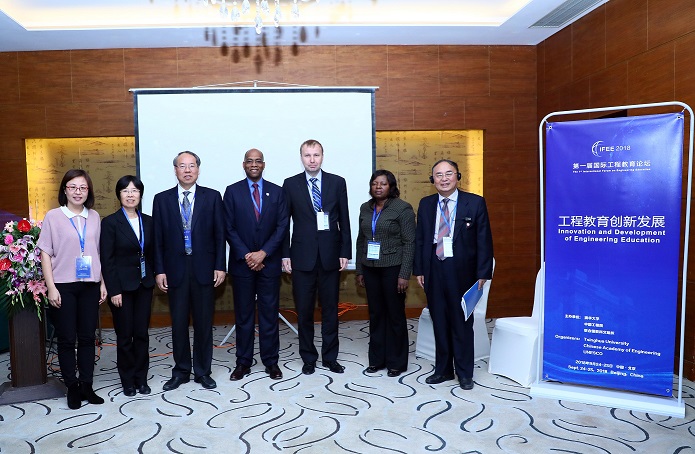Position: Home> Media Center > Forum News

Cultivating High-Quality Talents with Sustainable Development Capacity
for the Rapidly Changing World
Liu Xiaoqun
President, Xi'an University of Architecture and Technology
Xi'an University of Architecture and Technology has established a new strategy to cultivate students' sustainable development ability in order to solve the problem that the talent training mode is incompatible with the requirements of students' sustainable development ability improvement, and the management system is not effective in cultivating students' sustainable development ability. With such a training system in place, students' ability to innovate and run business has improved significantly, and their ability to develop sustainably has been widely recognized by society. This talent training model has also been unanimously recognized by industry experts.
Preparing a Diverse Engineering Workforce
Norman Fortenberry
Executive Director of ASEE
ASEE tells us what it does and how to achieve diversity and inclusiveness for people and students in terms of the development of engineering education. The mission of ASEE is to advance innovation, excellence, and access at all levels of education for the engineering profession. The vision of ASEE is to be the pre-eminent authority on the education of engineering professionals. And the values of ASEE are excellence, engagement, innovation, integrity, diversity and inclusion. To prepare a Diverse Engineering Workforce, and achieve the goals of diversity and inclusiveness in innovation, The first priority of ASEE is to transform engineering education to graduate the highest potential, career-ready engineering workforce that is diverse, creative, and innovative, enhance our capacity to innovate solutions to most pressing challenges in our communities, nations, and world, understand the impacts of its solutions on both technical and social systems, and possess the abilities to cope with the challenges of globalization and technical problems.
Diversity: Are we making progress?
Theresa Mkandawire
Dean of engineering, University of Malawi
This report starts from the following aspects: the background of Africa, the diversity and inclusion, and some challenges and problems in engineering. Africa is one of the least developed regions, it has a high demand for higher education, but engineering education in Africa faces a lot of challenges and problems, and also, the development is very slow. The most challenging issues in Africa in general are institutional challenges and poverty. The infrastructure in Africa is in the early stages of development. Schools are understaffed and do not have adequate research capacity. And at universities, the sex ratio is skewed and the proportion of female is small, especially in the field of engineering. All these restrict the development of high education in Africa, particularly in the engineering education. So we put more emphasis on collaboration, mainly with other universities. And we hope to cooperate with more colleges and universities.
How to Realize the Diversity of Engineering Education?
Alex Czekanski
NSERC/Quanser Chair in Design Engineering for Innovation
This article introduces the efforts made in engineering education from the perspective of York University's own development. The diversity of engineering education should be reflected in three aspects: the individual ability of graduate students; the motivation of project-driven learning; the establishment of 50:50 projects (50%male, 50%female). To that end, two concrete approaches should be taken: the university's shareholding system and organizational culture, which require cooperation of the whole crew to make it more inclusive.
Diversity of Women's Adaptability in Engineering
Wang Ling
Deputy Director of Continuing Education, Chinese Mechanical Engineering Society
The adaptability of different genders in the field of engineering education has attracted more and more attention. Engineering education innovation demands diversity, and women's participation suits to this trend. The perceptual characteristics with women also have unique natural advantages in the field of engineering education dominated by reasoning.
 京公网安备 110402430053 号
京公网安备 110402430053 号